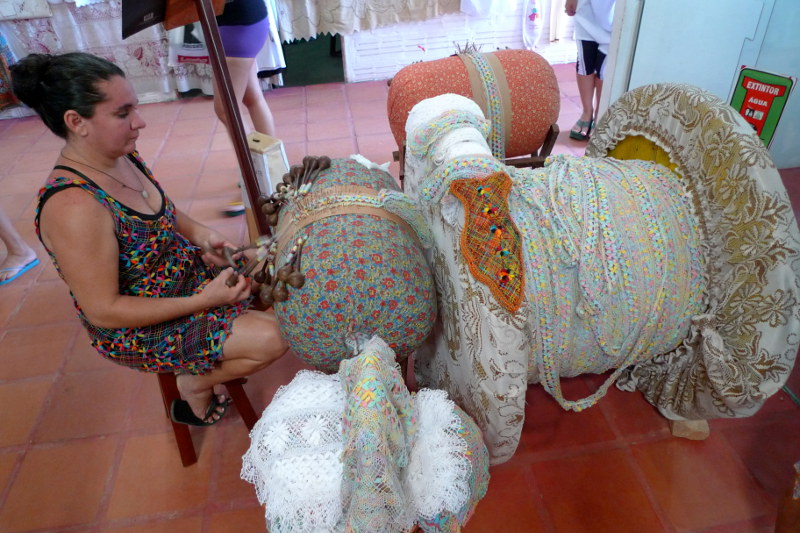Where there is a fishing net there is lace.
Above is common saying — I’m not sure of it’s validity; there could be a corrolation between fishing culture and lace. Of the countries I’ve visited, the ones that have a Portuguese colonial history are the ones that seem to have a continuing lace culture — except for Flanders, which is where lace is thought to have originated in the 1400s.
Renda (lace) arrived in Brazil with the wives of the Portuguese. During my wanderings I saw women in the markets and the streets creating bobbin or pillow lace.
In bobbin lace, wooden bobbins are used to weave around pins stuck into a giant pillow. On these pillows, Rendeiras (lace makers) continually weave edgings, flounces and trims. In an age where machines do the vast majority of clothing making, it’s wonderful to see a part of the world where traditional craft still exists.
Before heading to Morro Branco, we visited the Complexo Artesanal de Aquiraz where the ladies of lace are trying to set a record in the Guinness Book of Worlds Records for the longest consecutive piece of lace. They are 5-years into their goal. It’s expected to take another 6-years to complete.
No dia 25/01/2006 foi iniciado no Complexo Artesanal de Aquiraz a renda da grega com o intuito de ser a maior renda do mundo e entrar no “Guiness Book”. Esse trabalho é um objectivo, onde todas as Rendeiras trabalham em parceria para juntas conquistar uma referência no artesanato. Até hoje 820m.
I must say, this is the only country I’ve been where I’ve seen the women wear their creations. In all the markets there are lace dresses, shirts, hats, shawls, and vests mixed in with table clothes, doilies, and place-mats… and the women making and selling the lace clothing are also wearing the creations they are selling.
